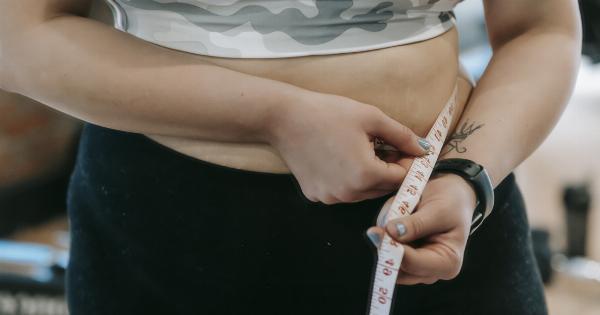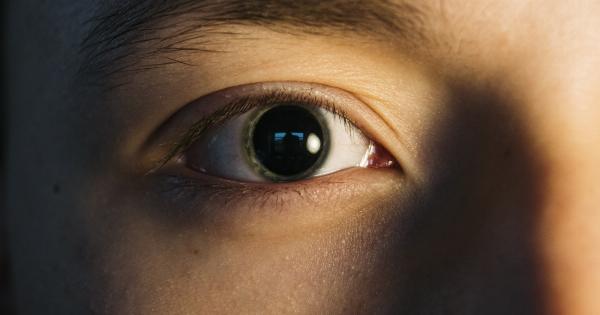Waist pain can be debilitating, affecting your daily activities and overall quality of life. Many people turn to analgesics, such as painkillers, to find relief.
However, new research suggests that these medications may not be the answer to effectively treat waist pain. This article will explore the latest findings and alternative methods to manage waist pain.
The Limitations of Analgesics
Analgesics, including over-the-counter painkillers like acetaminophen and ibuprofen, are commonly used to alleviate waist pain. These medications work by targeting pain receptors in the body, reducing inflammation and providing temporary relief.
However, relying solely on analgesics may lead to several limitations:.
1. Temporary Relief
Often, analgesics only provide temporary relief by masking the pain symptoms, rather than addressing the underlying cause. This can create a cycle of dependency on painkillers, without truly addressing the root of the problem.
2. Side Effects
Analgesics can cause a range of side effects, especially when used for an extended period. These may include stomach ulcers, gastrointestinal bleeding, liver damage, and kidney problems.
The potential risks associated with long-term analgesic use make them less than ideal for managing waist pain.
3. Medication Overuse Headache
Regular and prolonged use of analgesics can result in a medication overuse headache. This type of headache is caused by the excessive use of painkillers and leads to a vicious cycle where the pain worsens over time, prompting even more medication use.
4. Masked Symptoms
By solely relying on analgesics, you may mask the symptoms of a more serious underlying condition. Waist pain can be a sign of various medical issues, such as a herniated disc, sciatica, or spinal misalignment.
Ignoring these symptoms can exacerbate the problem and delay appropriate treatment.
Alternative Methods for Managing Waist Pain
Given the limitations of analgesics, it’s essential to explore alternative methods for managing waist pain. Here are some approaches that may provide more effective and long-lasting relief:.
1. Physical Therapy
Physical therapy focuses on strengthening the muscles surrounding the waist region, improving flexibility, and reducing pain.
A qualified physical therapist can design a tailored exercise program to target specific areas of weakness and provide techniques to alleviate pain.
2. Chiropractic Care
Chiropractic care involves manual adjustments of the spine, which aims to relieve pressure on nerves and improve overall spinal health.
Chiropractors can identify misalignments or subluxations that may be contributing to waist pain and provide adjustments to realign the spine.
3. Acupuncture
Acupuncture is an ancient practice that involves the insertion of thin needles into specific points on the body. This technique aims to promote healing, reduce inflammation, and alleviate pain.
Some individuals find relief from waist pain through regular acupuncture treatments.
4. Exercise and Stretching
Regular exercise and stretching can help strengthen the muscles supporting the waist and improve overall flexibility. Low-impact activities like swimming, yoga, or Pilates can be particularly beneficial for individuals experiencing waist pain.
5. Posture Correction
Many cases of waist pain are caused or exacerbated by poor posture. Focusing on maintaining proper posture throughout the day, whether sitting or standing, can help alleviate pressure on the waist region and reduce pain.
6. Heat and Cold Therapy
Applying heat or cold therapy to the affected area can offer temporary relief from waist pain. Heat therapy helps relax muscles and promote blood flow, while cold therapy reduces inflammation and numbs the area.
Using a hot or cold pack for 15-20 minutes at a time can be beneficial.
7. Mind-Body Techniques
Practices like meditation, deep breathing exercises, and mindfulness can help manage pain by reducing stress and promoting relaxation. These techniques can be integrated into a daily routine to alleviate waist pain and enhance overall well-being.
8. Ergonomic Adjustments
Making ergonomic adjustments to your workspace or living environment can reduce the strain on your waist. Using supportive chairs, adjusting desk height, and maintaining proper lifting techniques can all contribute to alleviating waist pain.
9. Dietary Changes
Some foods and beverages can contribute to inflammation and exacerbate waist pain.
Making dietary changes, such as reducing consumption of processed foods, sugar, and alcohol, and incorporating anti-inflammatory foods like fruits, vegetables, and omega-3 fatty acids, may have a positive impact on waist pain.
10. Seek Medical Advice
If waist pain persists or worsens despite trying alternative methods, it is crucial to seek medical advice.
A healthcare professional can conduct a thorough evaluation, identify the underlying cause of the pain, and recommend appropriate treatment options.






























